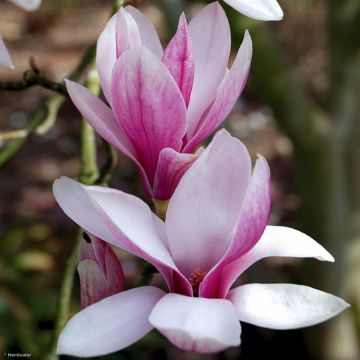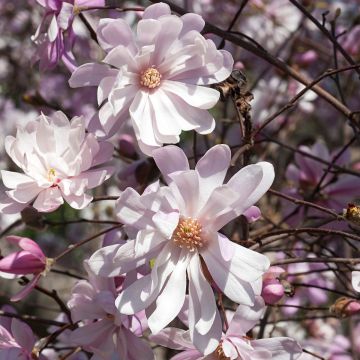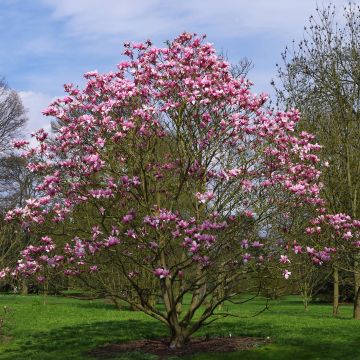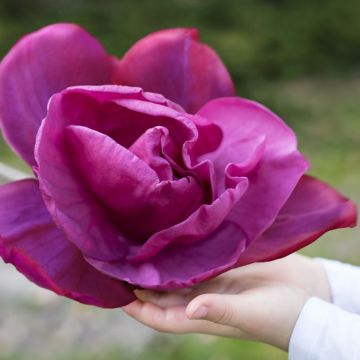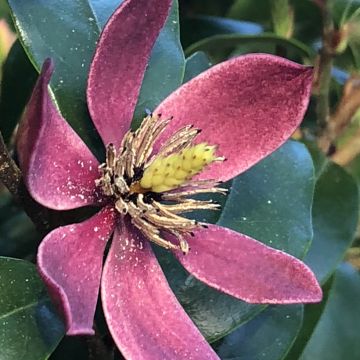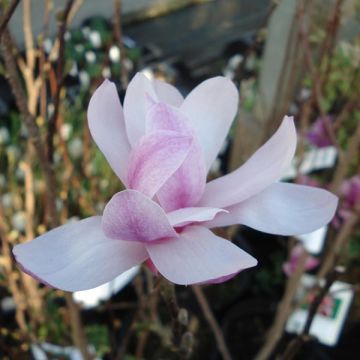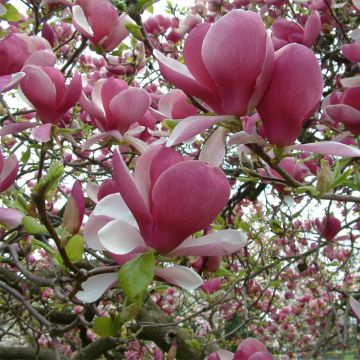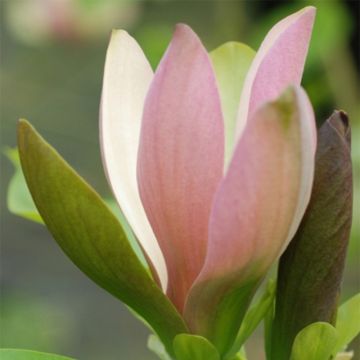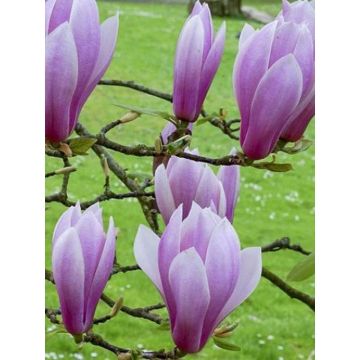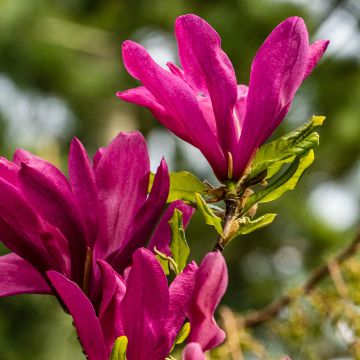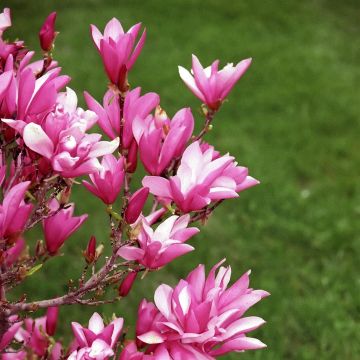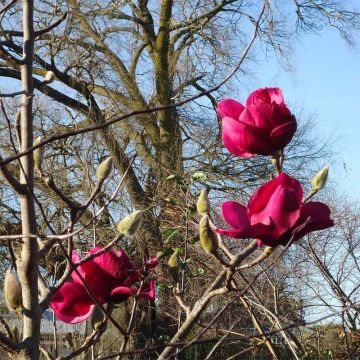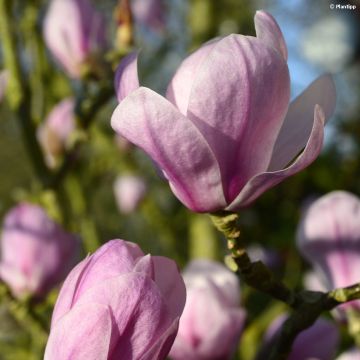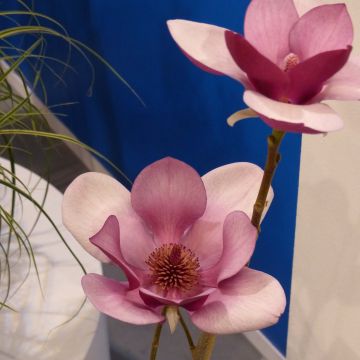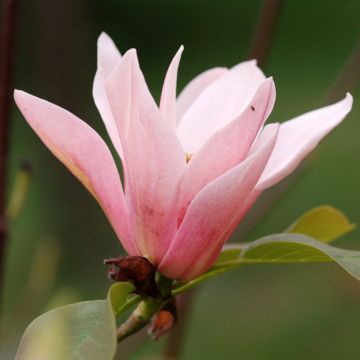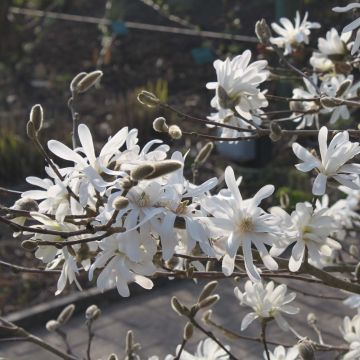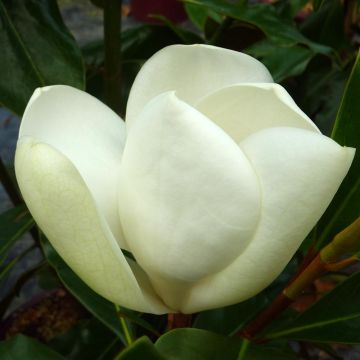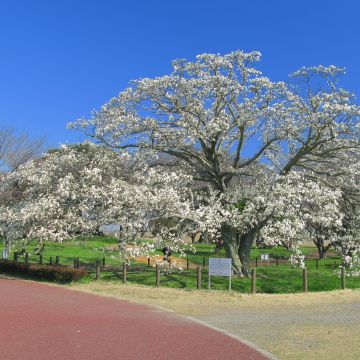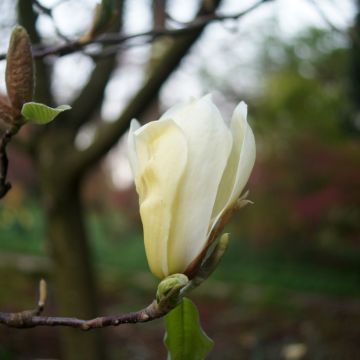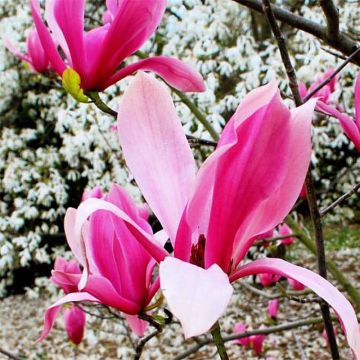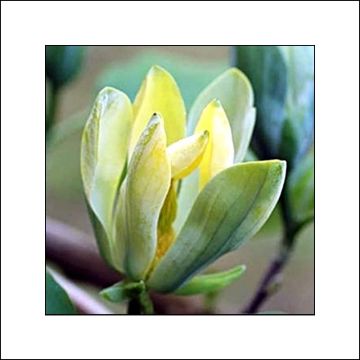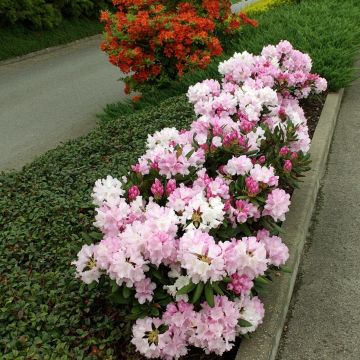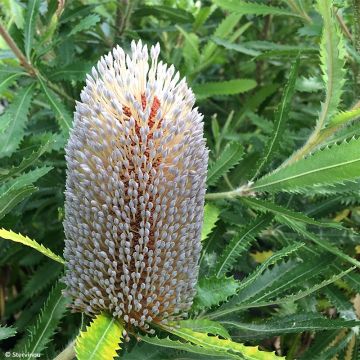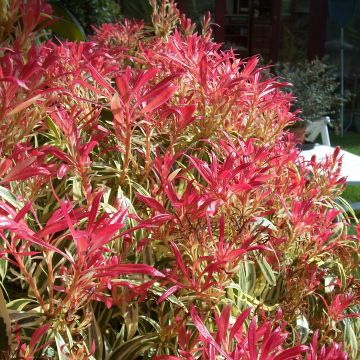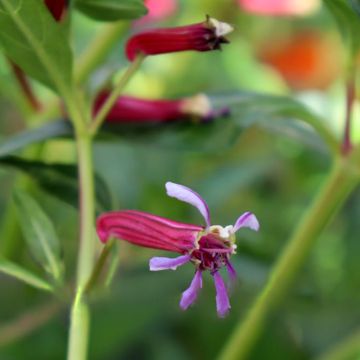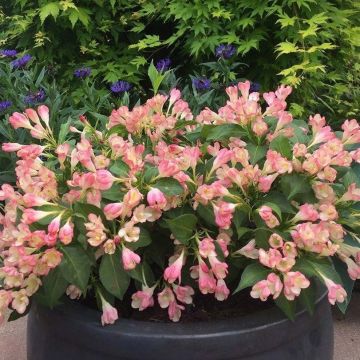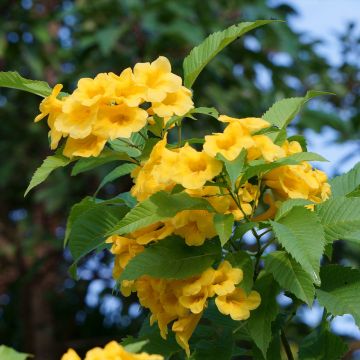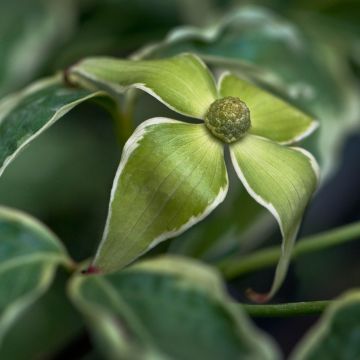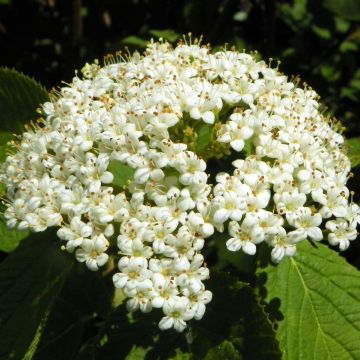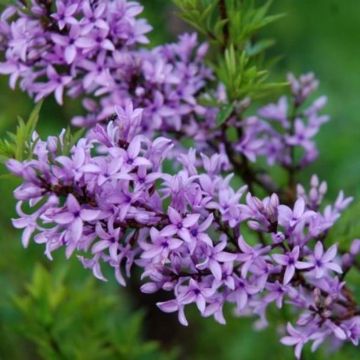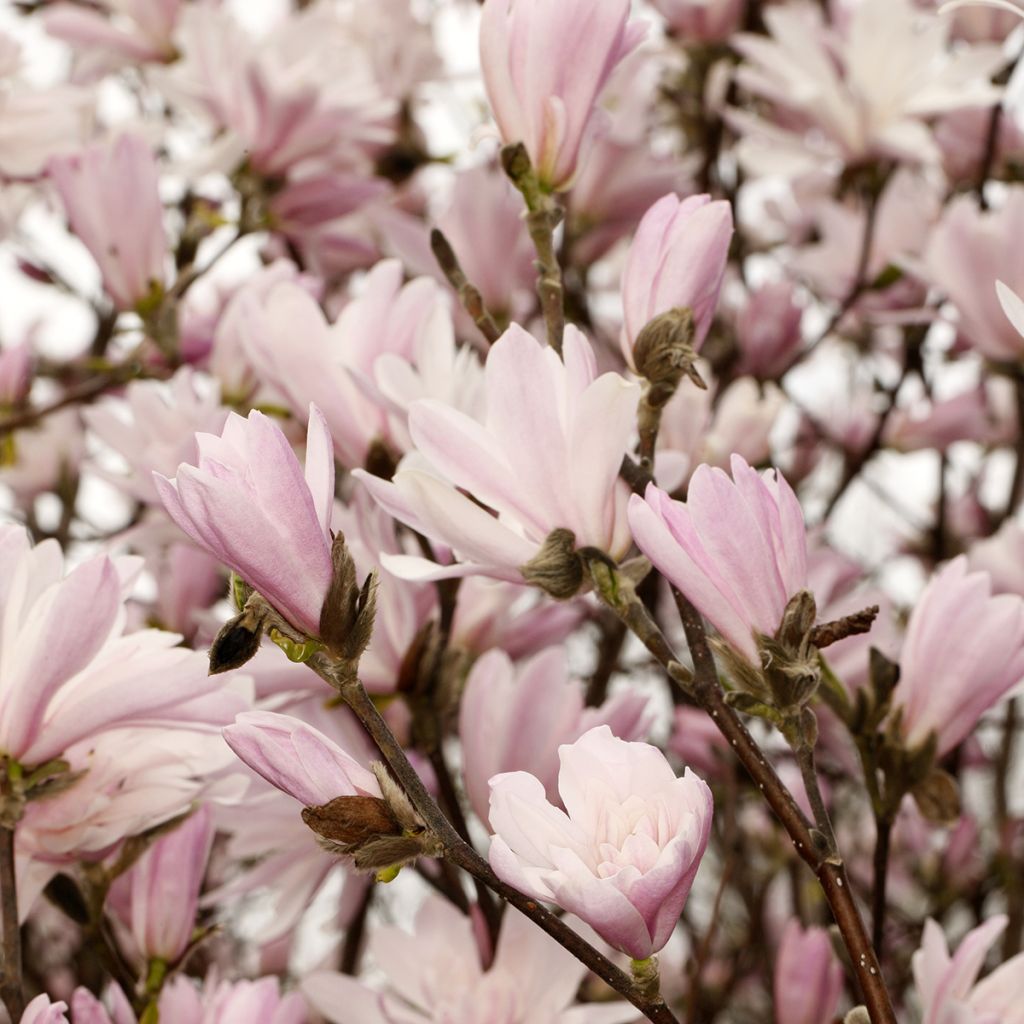

Magnolia stellata Chrysanthemumiflora
Magnolia stellata Chrysanthemumiflora
Magnolia stellata 'Chrysanthemumiflora'
Star Magnolia, Starry Magnolia
Why not try an alternative variety in stock?
View all →This plant carries a 24 months recovery warranty
More information
We guarantee the quality of our plants for a full growing cycle, and will replace at our expense any plant that fails to recover under normal climatic and planting conditions.
From €5.90 for pickup delivery and €6.90 for home delivery
Express home delivery from €8.90.
Delivery to Corse prohibited: UE law prohibits the import of this plant from mainland France to Corse as part of the fight against Xylella fastidiosa. Please accept our sincere apologies.
More information
Does this plant fit my garden?
Set up your Plantfit profile →
Description
Magnolia stellata 'Chrysanthemumiflora' owes its name to the appearance of its flowers of up to forty white petals tinged with pale pink, reminiscent of certain chrysanthemums. Some specialists in the genus consider it to be the best and most desirable selection of Magnolia stellata 'Rosea'. In early spring, the bush is literally covered in very double, slightly fragrant flowers, before the foliage appears, even from a young age. Compact, generous and accommodating, it is ideal for small gardens, and it also thrives in a large pot on the terrace or balcony.
The Star Magnolia, in Latin Magnolia stellata, native to Japan, is the earliest and most floriferous species in the Magnolia genus. It is also one of the most adaptable to soil and climate. The bush shows slow growth and moderate development. 'Chrysanthemumiflora' (sometimes encountered under the name 'Chrysanthemiflora') is a seedling of Magnolia stellata 'Rubra'. This lovely plant was selected by K. Wada of Hakoneya Nurseries in Yokohama, Japan. It is characterized by its particularly double flowers and exceptional floriferousness.
The flowers of the Star Magnolia 'Chrysanthemumiflora', measuring 8 to 9.5 cm in diameter, composed of 25 to 40 fine petals, emerge from pretty fresh and vibrant pink buds. They are light pink and turn to white touched with pale pink on the reverse as they open. They bloom in abundance on the branches from March, before the leaves appear. The explosion of flowering is rapid and persists for long weeks despite the cool temperature. It also has a fairly light and subtle fragrance with hints of vanilla and lemon. Flowering occurs in young subjects from the age of 18 months. This beautiful shrub has a bushy then pyramidal habit over time, but very branched, it will reach 2.50 to 3 m in height, slightly less in width. The 4 to 10 cm long leaves develop once flowering is complete. They are arranged alternately on the branches, simple and entire, oval in shape, dark green with a paler underside. They turn yellow in winter before falling.
This Star Magnolia 'Chrysanthemumiflora', an exceptional ornamental tree, will work beautifully in a modest-sized garden where it will quickly become the star of spring. It is a classic of the romantic garden. It is most often used as a standalone specimen in the middle of a lawn, where its remarkable flowering is most impressive. When planting, remember that once the flowering is over, it will somewhat fade into anonymity. It can be associated with a mass of shrubs with staggered flowering periods (Camellias, Hydrangeas, Rhododendrons, Shrub Roses, Japanese Quince, etc.), for an English-style garden. Just make sure not to plant other plants within 1.50 m of the Magnolia trunk, as its roots cannot tolerate competition. It is also possible to create beautiful flowering hedges by alternating this Magnolia with other cultivars. Due to its small size and slow growth, the Star Magnolia is ideal in a container on a terrace, where you can enjoy its charm up close.
Report an error about the product description
Plant habit
Flowering
Foliage
Botanical data
Magnolia
stellata
'Chrysanthemumiflora'
Magnoliaceae
Star Magnolia, Starry Magnolia
Magnolia stellata 'Chrysanthemiflora'
Cultivar or hybrid
Other Magnolia
Planting and care
Plant Magnolia stellata 'Chrysanthemumiflora' in a sunny, non-scorching (preferably shaded in the south) or partially shaded location, sheltered from the wind (this magnolia is hardy to approximately -15°C). Plant it in cool, acidic or neutral (even slightly alkaline) soil that is fairly firm, rich, and humus-bearing. If the soil is dry, mulch to retain moisture. In alkaline soil, dig a large planting hole and fill it with ericaceous soil mixed with your garden soil, or plant it in a container. The soil should always remain slightly moist, even in summer. Apply compost or slow-release organic fertilizer in autumn, or flowering shrub fertilizer in spring. This bush does not like root competition, so maintain a planting distance of approximately 1m.
Planting period
Intended location
Care
This item has not been reviewed yet - be the first to leave a review about it.
Spring-flowering shrubs
Haven't found what you were looking for?
Hardiness is the lowest winter temperature a plant can endure without suffering serious damage or even dying. However, hardiness is affected by location (a sheltered area, such as a patio), protection (winter cover) and soil type (hardiness is improved by well-drained soil).

Photo Sharing Terms & Conditions
In order to encourage gardeners to interact and share their experiences, Promesse de fleurs offers various media enabling content to be uploaded onto its Site - in particular via the ‘Photo sharing’ module.
The User agrees to refrain from:
- Posting any content that is illegal, prejudicial, insulting, racist, inciteful to hatred, revisionist, contrary to public decency, that infringes on privacy or on the privacy rights of third parties, in particular the publicity rights of persons and goods, intellectual property rights, or the right to privacy.
- Submitting content on behalf of a third party;
- Impersonate the identity of a third party and/or publish any personal information about a third party;
In general, the User undertakes to refrain from any unethical behaviour.
All Content (in particular text, comments, files, images, photos, videos, creative works, etc.), which may be subject to property or intellectual property rights, image or other private rights, shall remain the property of the User, subject to the limited rights granted by the terms of the licence granted by Promesse de fleurs as stated below. Users are at liberty to publish or not to publish such Content on the Site, notably via the ‘Photo Sharing’ facility, and accept that this Content shall be made public and freely accessible, notably on the Internet.
Users further acknowledge, undertake to have ,and guarantee that they hold all necessary rights and permissions to publish such material on the Site, in particular with regard to the legislation in force pertaining to any privacy, property, intellectual property, image, or contractual rights, or rights of any other nature. By publishing such Content on the Site, Users acknowledge accepting full liability as publishers of the Content within the meaning of the law, and grant Promesse de fleurs, free of charge, an inclusive, worldwide licence for the said Content for the entire duration of its publication, including all reproduction, representation, up/downloading, displaying, performing, transmission, and storage rights.
Users also grant permission for their name to be linked to the Content and accept that this link may not always be made available.
By engaging in posting material, Users consent to their Content becoming automatically accessible on the Internet, in particular on other sites and/or blogs and/or web pages of the Promesse de fleurs site, including in particular social pages and the Promesse de fleurs catalogue.
Users may secure the removal of entrusted content free of charge by issuing a simple request via our contact form.
The flowering period indicated on our website applies to countries and regions located in USDA zone 8 (France, the United Kingdom, Ireland, the Netherlands, etc.)
It will vary according to where you live:
- In zones 9 to 10 (Italy, Spain, Greece, etc.), flowering will occur about 2 to 4 weeks earlier.
- In zones 6 to 7 (Germany, Poland, Slovenia, and lower mountainous regions), flowering will be delayed by 2 to 3 weeks.
- In zone 5 (Central Europe, Scandinavia), blooming will be delayed by 3 to 5 weeks.
In temperate climates, pruning of spring-flowering shrubs (forsythia, spireas, etc.) should be done just after flowering.
Pruning of summer-flowering shrubs (Indian Lilac, Perovskia, etc.) can be done in winter or spring.
In cold regions as well as with frost-sensitive plants, avoid pruning too early when severe frosts may still occur.
The planting period indicated on our website applies to countries and regions located in USDA zone 8 (France, United Kingdom, Ireland, Netherlands).
It will vary according to where you live:
- In Mediterranean zones (Marseille, Madrid, Milan, etc.), autumn and winter are the best planting periods.
- In continental zones (Strasbourg, Munich, Vienna, etc.), delay planting by 2 to 3 weeks in spring and bring it forward by 2 to 4 weeks in autumn.
- In mountainous regions (the Alps, Pyrenees, Carpathians, etc.), it is best to plant in late spring (May-June) or late summer (August-September).
The harvesting period indicated on our website applies to countries and regions in USDA zone 8 (France, England, Ireland, the Netherlands).
In colder areas (Scandinavia, Poland, Austria...) fruit and vegetable harvests are likely to be delayed by 3-4 weeks.
In warmer areas (Italy, Spain, Greece, etc.), harvesting will probably take place earlier, depending on weather conditions.
The sowing periods indicated on our website apply to countries and regions within USDA Zone 8 (France, UK, Ireland, Netherlands).
In colder areas (Scandinavia, Poland, Austria...), delay any outdoor sowing by 3-4 weeks, or sow under glass.
In warmer climes (Italy, Spain, Greece, etc.), bring outdoor sowing forward by a few weeks.

































